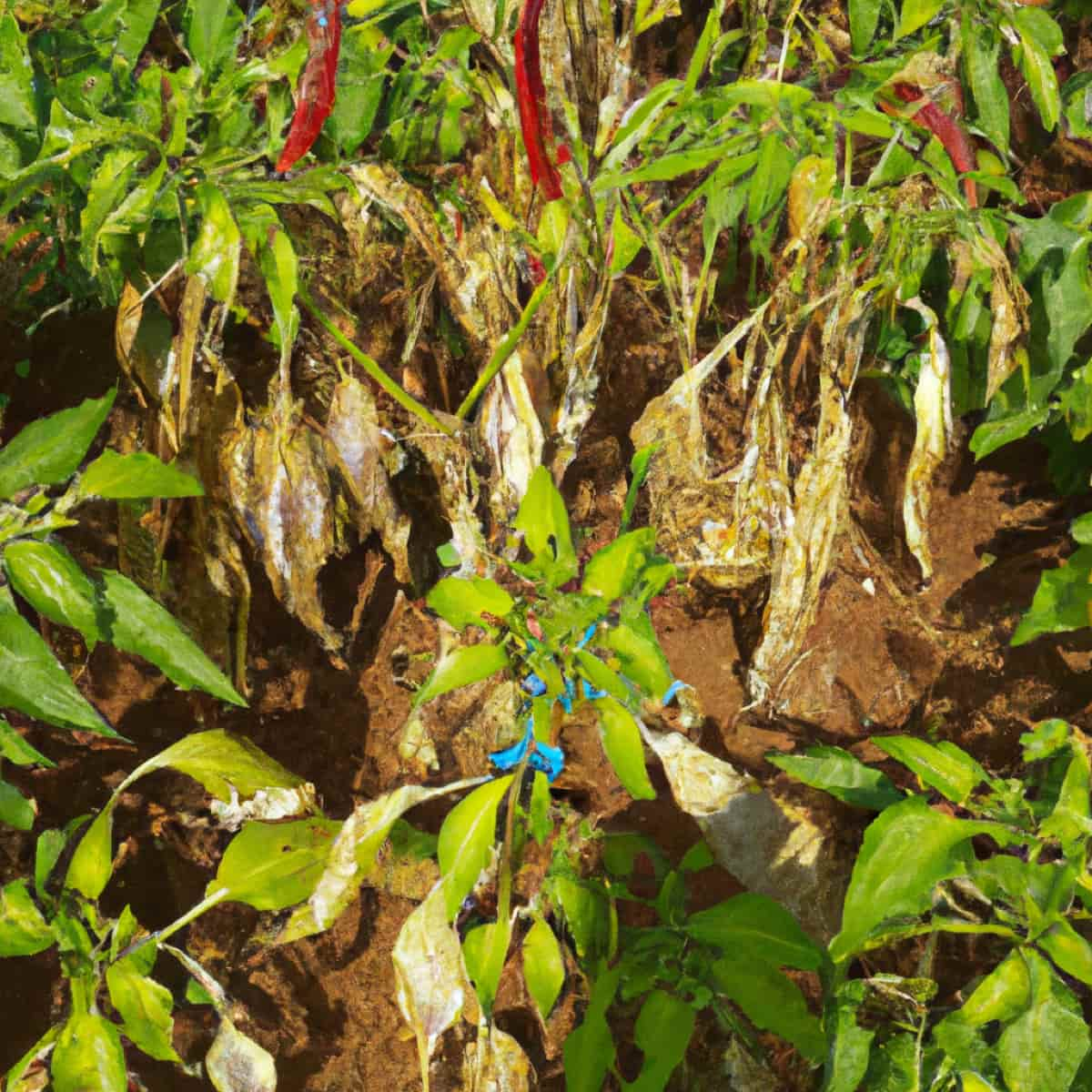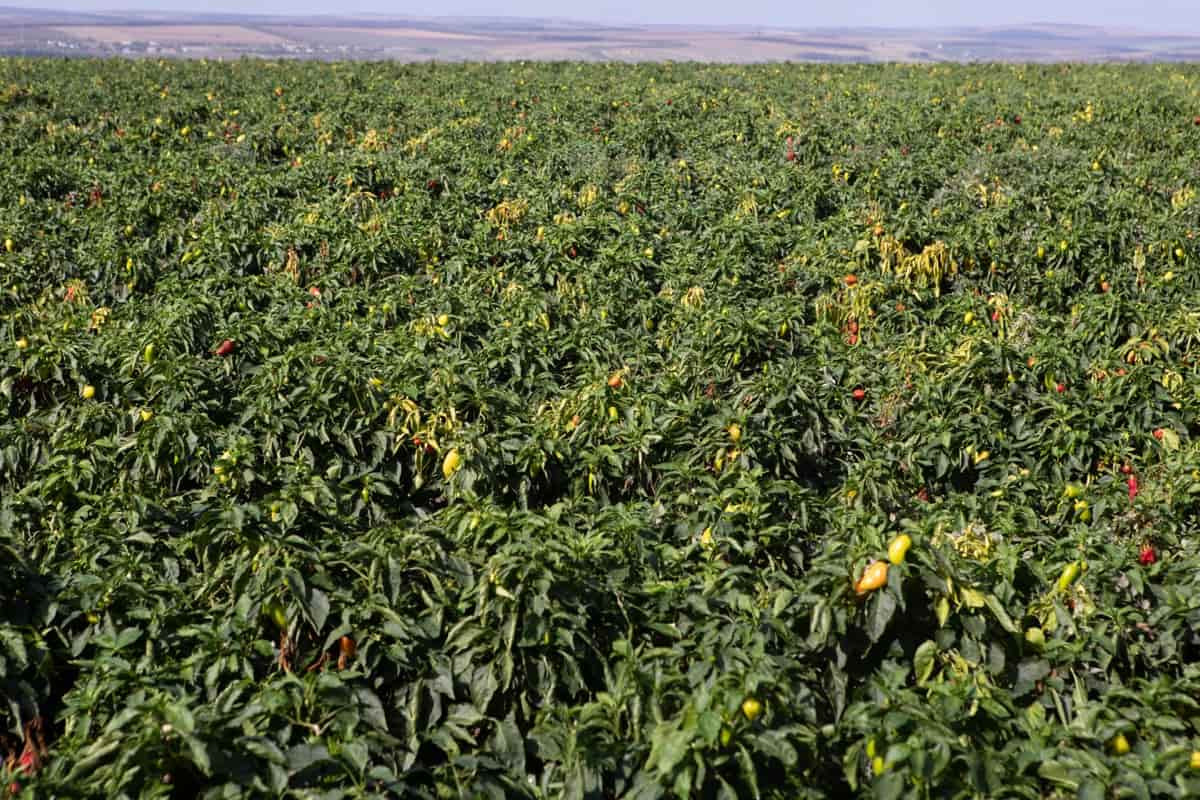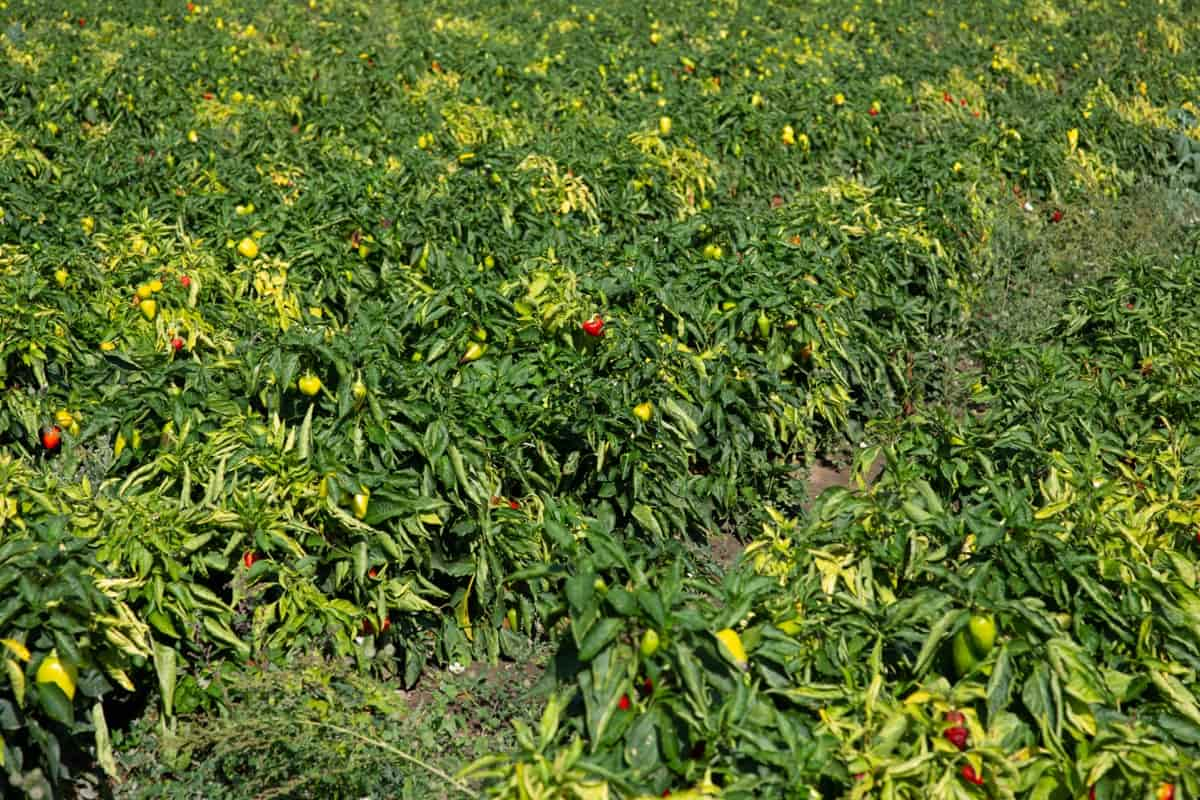Fusarium wilt is a serious fungal disease that affects chili plants, causing them to wilt and eventually die. Wilt disease is caused by the Fusarium solani, which invades the plant’s roots and blocks the flow of water and nutrients, leading to wilting and yellowing of leaves. Chili is an important crop widely grown for its culinary and medicinal uses.

It belongs to the Capsicum genus and is a warm-season crop that requires good soil fertility, adequate moisture, and a warm climate to grow. Chili is vulnerable to several pests and diseases, and fusarium wilt is one of the most devastating diseases affecting this crop. Fusarium wilt can be prevented or controlled in chili by using types resistant to the disease, rotating crops, solarizing the soil, and using fungicides.
To keep plants healthy and reduce the risk of infection, it is also important to maintain proper watering and drainage, avoid overfertilizing, and keep the soil in good shape. Fusarium wilt can cause crop losses, but if it is found early and treated quickly, it can be kept to a minimum, and the crop can stay healthy.
Fusarium Wilt Management of in Chilli Peppers
Causes/Pathogen of Fusarium Wilt in Chilli
Fusarium wilt in chili is caused by a fungus called Fusarium solani. The fungus forms grayish-white mycelium and produces hyaline, cylindrical microconidia and cylindrical to falcate macroconidia. The fungus also forms chlamydospores, which are globose to oval and rough-walled. These structures help the fungus survive in the soil for long periods, and they can infect the chili plant’s roots, blocking the flow of water and nutrients and causing the plant to wilt and eventually die.
The Disease Cycle of Fusarium Wilt in Chilli
Fusarium wilt in chili survives in the soil and infected plant debris. The fungus can spread through contaminated soil, water, and cultivated implements. Once the fungus infects the chili plant’s roots, it blocks the flow of water and nutrients, causing the plant to wilt and eventually die. The disease can spread rapidly, especially in warm and humid conditions. Managing soil health and implementing proper sanitation practices can help reduce the spread of the disease in chili crops.
Conditions Favorable for Fusarium Wilt Spread in the Field
Fusarium wilt in chili thrives in warm and moist soil conditions. The fungus spreads more rapidly when the soil is relatively moist and has a high temperature. Warm and humid weather conditions also favor the spread of this disease. Over-irrigation or poor drainage practices can lead to excessive soil moisture, creating favorable conditions for the fungus to infect the chili plant’s roots.
Damage Symptoms of Fusarium Wilt
- Clearing of the veinlets and chlorosis of the leaves
- Younger leaves die in succession, leading to wilting and death of the entire plant in a few days.
- Petioles and leaves drooping and wilting.
- Yellowing of lower leaves first, followed by affected leaflets wilting and dying.
- Browning of the vascular system in later stages of the disease
- Plants become stunted and eventually die.
- Wilting appears on both young and mature plants.
- Leaves turning yellow, often on one side
- Brownish-red discoloration of internal tissues in longitudinal sections of the stem
- These fungi cause crop-specific damage patterns, with some plants showing signs of wilting even at a juvenile stage.
Yield Loss due to Fusarium Wilt on Chilli
Fusarium wilt in chili can cause yield losses ranging from 10 to 80%. In some areas, a different species of fungus called F. equiseti has been reported as the cause of chili wilt. This disease can significantly impact chili production globally, leading to economic losses for farmers.
In case you missed it: Powdery Mildew Management in Chilli Pepper: Symptoms, Identification, Treatment, Chemical, Biological, Natural, and Organic Control

Fusarium Wilt Management in Chilli by Cultural Method
- Fusarium wilt in chili crops can be managed using cultural techniques.
- Rotate chili harvests with non-susceptible crops to prevent fungus buildup in the soil.
- To kill the fungus, expose the soil to sunlight by covering it with transparent plastic for several weeks.
- To avoid the fungus from spreading, remove and eliminate infected plant debris.
- Utilization of hardy varieties: Plant Fusarium wilt-resistant types of chili.
- To reduce soil moisture and produce unfavorable conditions for the fungus, avoid over-irrigation and ensure proper drainage.
- Maintain optimum soil fertility to boost plant disease resilience.
Fusarium Wilt Management in Chilli by Biological Method
- Biological methods can also be used to manage Fusarium wilt in chili crops.
- Biological methods can also be used to manage Fusarium wilt in chili crops. Biocontrol agents: Application of beneficial microorganisms like Trichoderma and Bacillus subtilis that can compete with the Fusarium fungus and reduce its activity.
- Soil amendment: Incorporating organic amendments like compost or vermicompost into the soil can improve soil health and suppress the growth of the fungus.
- Seed treatment: Treating chili seeds with biocontrol agents before planting can enhance plant resistance to the disease.
Fusarium Wilt Management in Chilli by Chemical Method
- Chemical control methods should be used as a last resort and as part of an integrated approach to managing Fusarium wilt in chili.
- Fungicides can be applied to soil in contaminated areas, and drenching the soil with copper oxychloride or Bordeaux mixture can provide protection.
- It is also recommended to use wilt-resistant chili varieties. Seed treatment with Trichoderma viride formulation or Carbendazim can be effective. Mixing T. viride formulation with FYM and applying it to the soil in rows of chili can help control the disease.
Fusarium Wilt Management in Chilli by Organic/Natural Method
- One effective method is to use biological control agents like Trichoderma viride, which can treat the seeds before sowing.
- Some soils naturally suppress the growth of Fusarium, and adjusting the soil pH to 6.5-7.0 and using nitrate as a nitrogen source can also help reduce the severity of the disease.
- Using organic mulch and rotating crops can also make the soil healthier and less likely to get rid of.
Preventive Measures for Control of Fusarium Wilt
- Use resistant varieties of chili if available. Adjust the soil pH to 6.5-7.0 and use nitrate as a nitrogen source.
- Monitor your fields regularly for signs of the disease and remove any infected plants immediately.
- Keep your equipment clean and avoid damage to the plants during fieldwork.
- Apply balanced fertilization with a focus on recommended potash. After harvest, plow and burn the plant debris.
- Cover the infected area with black plastic foil in full sun for a month to kill the fungus.
- Plan crop rotations of up to 5-7 years to reduce the levels of fungi in the soil.
In case you missed it: Cercospora Leaf Spot Management in Chilli Pepper: Symptoms, Identification, Treatment, Chemical, Biological, Natural, and Organic Control

Conclusion
Fusarium wilt in chili can result in major yield decreases. Crop rotation, soil management, and resistant varieties are critical preventive steps. Biological and natural methods, in addition to chemical control, can be successful in disease management.
- Types of Fungicides Used in Agriculture
- Common Issues in the Fruit Development Stage of Pomegranate Farming
- Fruit Development Issues in Papaya: Easy Solutions and Treatment
- Soil-Borne Diseases and How to Protect Your Plants
- Practices to Prevent Disease Spread in the Garden
- From Wilted to Thriving: How to Treat Root Rot Naturally in Houseplants
- Natural Remedies to Cure Brown Spots on Fig Tree Leaves
- Natural Solutions for Poinsettia Problems: 100% Effective Remedies
- How to Control Calla Lily Problems: Natural Remedies for Leaf and Flower Problems